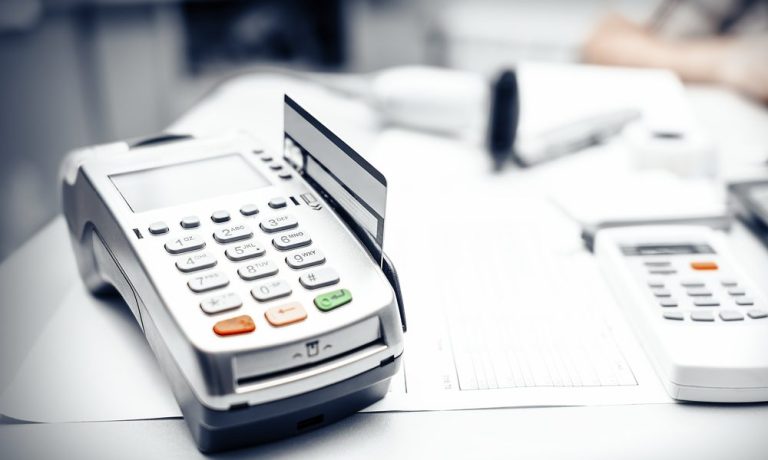
It’s the season of giving, and that means many consumers are in the spirit to donate to a good cause — without worrying about card fraud. By using mPOS devices, nonprofit orgs can improve payments security, while enabling smooth processing and eliminating long fundraising event lines, says Lisa Hansell, senior manager of development for the Wissahickon Valley Watershed Association, a nonprofit land trust. In this month’s mPOS Tracker, Hansell explains how the technology boosts donations and protects donors.
Cash is no longer king when it comes to taking payments. In fact, it’s sharing the crown at best.
Seventy-six percent of Americans surveyed by U.S. Bank in 2017 said they carry less than $50 in cash, and 45 percent use it fewer than eight days per month. This sizeable chunk of consumers forgoing paper bills means “cash-only” operations risk losing business.
That also holds true for nonprofit organizations, which aren’t immune to the commercial world’s trends. Success means keeping up with consumer and would-be donors’ expectations, according to Lisa Hansell, development manager of the Wissahickon Valley Watershed Association (WVWA). The nonprofit land trust focuses on protection and stewardship of the Wissahickon Creek and surrounding areas in Pennsylvania.
WVWA runs fundraising events like races, beer gardens, and maple sugaring tours to support its mission, she told PYMNTS in a recent interview. The group often turns to an mPOS app and card-swipe solution during these events, enabling it to meet customers’ changing expectations, sign new members up and quickly and securely take payments.
“If you go to a pop-up market with local vendors, and everybody takes credit cards now, it’s almost expected that everybody would,” Hansell explained. “In the nonprofit world, I feel that we should also be in that mode of expecting to take credit cards. It’s just the way you have to do business.”
Safer and Swifter
Working with people who wanted to pay by credit card was a complicated affair for WVWA before it could rely on an mPOS solution.
An attendee previously had to write his or her card information down on a piece of paper, which staff would then put in a box locked in a car for safe keeping. The card details would then be manually entered into a payment processing system the next day. Because WVWA’s events typically attract hundreds of attendees, that slow-moving process was often a hassle that resulted in long lines.
“It was very time-consuming and cumbersome,” Hansell said. “[We] had more security issues.”
Roughly 1,700 runners participated in the nonprofit’s 5K fundraising race this summer, for example. Most pre-registered, but 100 or more showed up on race day to sign up and pay. WVWA had adopted an mPOS offering by this point, however, selecting one from DonorPerfect, a fundraising software provider with which the nonprofit had already partnered for other solutions. The mPOS enables WVWA to scan a card with a smartphone camera, use a provided card swipe or manually key in the information on the phone screen. It was critical to keeping the line moving.
“The [card] swipe was a godsend for that, because the line was so long,” Hansell said. “We had a line constantly for about an hour that was at least 20-people deep.”
The mPOS solution’s app-based nature was also important, she noted, a fact that became clear when, due to the high usage levels, the battery died on the device a staff member was using to run the app. Rather than having to shut down donations while the device recharged, WVWA staff members were able to easily switch to taking payments on a new device and keep things moving.
Enabling More, and Higher, Donations
The mPOS solution has also enabled some donors to contribute more than they would have if they could only use the cash they had on them, Hansell added. On-site card taking at events like a beer garden means attendees can decide on the spot to offer up a higher amount. What’s more, staff could help attendees up their donations or pay the $50 fee to become a member when equipped with mPOS devices.
“Because the membership is a higher cost, some people didn’t necessarily have that kind of cash,” she explained. “Having mobile processing available to us makes it easy for people to make an additional donation if they want or join as a member if they want.”
WVWA primarily uses its mPOS to facilitate donations from mid-level or one-time givers, Hansell said. A nonprofit could use the solution for door-to-door fundraising efforts or to try to solicit in-person donations when visiting major donors, but that’s not part of the group’s approach — or its relationship with its donors.
Still, the ability to access the mPOS offering via app on an Android or Apple device — and the associated card swipe’s portability — mean staff can keep the option handy. Even if they weren’t actively requesting donations at an event, someone could approach them unexpectedly with a request to make one. The solution means they would easily be able to accept such an offer.
“If we’re at event and a donor says, ‘Oh, here, can you take a donation?’ … I can do that simply and I don’t have to say, ‘Oh, let me get a piece of paper, let’s write this down and I promise I’ll keep it secure,’” Hansell said. “Because it’s an easy product and an easy technology, I can carry my phone and the [card] swipe with me when I’m going to any event … and have it available if somebody offers.”
No organization wants to turn away an interested donor or customer, and the right technology could be the difference between accepting or turning away a potential contribution. After all, keeping up with consumer payment expectations is critical to unlocking new donations and helping nonprofits — and their missions — thrive.